Medieval Times
Apr 17, 2020 20:18:07 #
On one of our past trips to Europe, the wife wanted to see the Caves of Lascaux in south central France. On recommendations we drove from Germany to the Bordeaux region of France and wound up in Sarlat de Canada as our base. The Caves (replicas) were fantastic but staying in Sarlat was truly an unexpected treat. The architecture, the culture, the people, evening walks and dinner in the medieval section of town was fabulous. For those still in quarantine here's a brief, very brief, history of Sarlat for your enjoyment...or not.
Sarlat is a medieval town which developed around a prosperous Benedictine abbey whose origins are unknown. It seems that it already existed in the 9th century and was one of the six great abbeys of Périgord, one of medieval regions in France. That Abbey is the only one of the six abbeys to survive the Viking raids primarily because it was located a couple of miles from the Dordogne River. The first written mention of the abbey of Sarlat dates back to 1081.
The monastic estate of Sarlat managed to remain independent and placed itself under the direct authority of the Pope in 1153. In the same year, the abbey’s estate encompassed all of Périgord Noir as well as the regions of Agen and Toulouse. In 1181, the King of France, Philip Augustus, committed himself to protecting the whole city. The abbey was rebuilt between 1125 and 1160 in a Romanesque architectural style, and its prosperity reached its peak during the 13th century.
The prosperity of Sarlat between the 11th and 13th centuries ended temporarily in 1279 when the Great Plague from the East struck the city, killing 2,500 people, which was in fact nearly half of the inhabitants. Plague, rebellions, Wars of Religion, Napoleonic War, French Revolution all took its toll on Sarlat over the next few centries.
Sarlat has remained preserved and is one of the towns most representative of 14th century France. Sarlat was often nicknamed ‘la belle endormie’ (Sleeping Beauty) during the 19th century, mainly due to its remoteness at the heart of Périgord region. After the Second World War, Sarlat, like other Medieval towns in Germany & France, rediscovered mass-tourism thanks to the Malraux Law of 4 August 1962. André Malraux was Minister of Culture in 1962 and a former resistance member in Périgord during the Second World War. This legal act greatly enhanced Sarlat’s medieval centre through the extensive restoration of most of its houses. It was also in 1965 that the municipalities of Sarlat and La Canéda merged into a new ‘commune’, obviously named “Sarlat-la-Canéda”.
If you want to see one of the best, preserved Medieval towns in Europe, Sarlat and the Dordogne Valley should be on your list. Streets are extremely narrow, buildings, home and businesses are well preserved, restaurants are plentiful and awesome and alleys lead to other alleys and they lead to other alleys. Sarlat is also renown for its luscious open-air market, which sells regional products, including foie gras, hence the statues of the geese. Here are a few photos of the old town area of Sarlat, hope you enjoy the flavor of their yellow limestone buildings.
Sarlat is a medieval town which developed around a prosperous Benedictine abbey whose origins are unknown. It seems that it already existed in the 9th century and was one of the six great abbeys of Périgord, one of medieval regions in France. That Abbey is the only one of the six abbeys to survive the Viking raids primarily because it was located a couple of miles from the Dordogne River. The first written mention of the abbey of Sarlat dates back to 1081.
The monastic estate of Sarlat managed to remain independent and placed itself under the direct authority of the Pope in 1153. In the same year, the abbey’s estate encompassed all of Périgord Noir as well as the regions of Agen and Toulouse. In 1181, the King of France, Philip Augustus, committed himself to protecting the whole city. The abbey was rebuilt between 1125 and 1160 in a Romanesque architectural style, and its prosperity reached its peak during the 13th century.
The prosperity of Sarlat between the 11th and 13th centuries ended temporarily in 1279 when the Great Plague from the East struck the city, killing 2,500 people, which was in fact nearly half of the inhabitants. Plague, rebellions, Wars of Religion, Napoleonic War, French Revolution all took its toll on Sarlat over the next few centries.
Sarlat has remained preserved and is one of the towns most representative of 14th century France. Sarlat was often nicknamed ‘la belle endormie’ (Sleeping Beauty) during the 19th century, mainly due to its remoteness at the heart of Périgord region. After the Second World War, Sarlat, like other Medieval towns in Germany & France, rediscovered mass-tourism thanks to the Malraux Law of 4 August 1962. André Malraux was Minister of Culture in 1962 and a former resistance member in Périgord during the Second World War. This legal act greatly enhanced Sarlat’s medieval centre through the extensive restoration of most of its houses. It was also in 1965 that the municipalities of Sarlat and La Canéda merged into a new ‘commune’, obviously named “Sarlat-la-Canéda”.
If you want to see one of the best, preserved Medieval towns in Europe, Sarlat and the Dordogne Valley should be on your list. Streets are extremely narrow, buildings, home and businesses are well preserved, restaurants are plentiful and awesome and alleys lead to other alleys and they lead to other alleys. Sarlat is also renown for its luscious open-air market, which sells regional products, including foie gras, hence the statues of the geese. Here are a few photos of the old town area of Sarlat, hope you enjoy the flavor of their yellow limestone buildings.
Famous Foie Gras Geese Statues
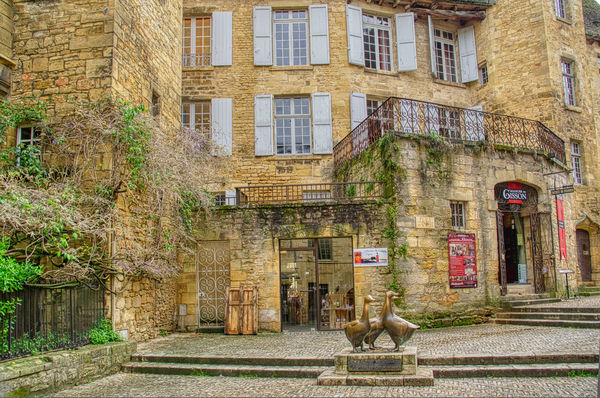
(Download)
Narrow Streets
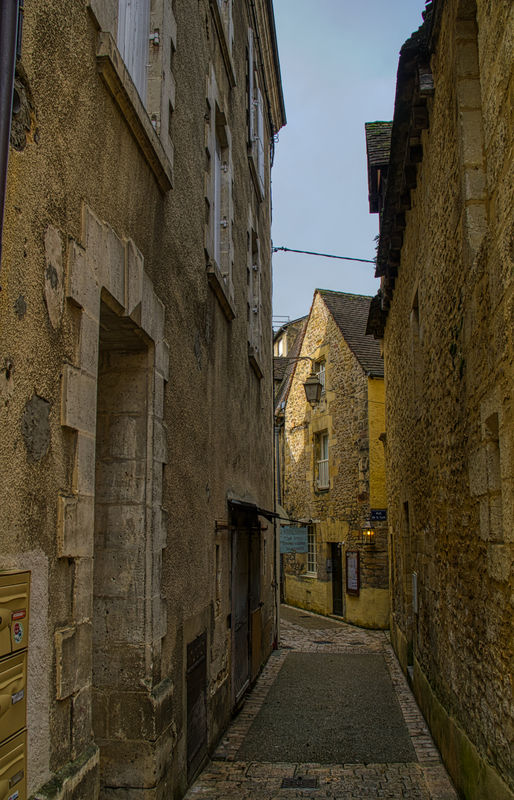
(Download)
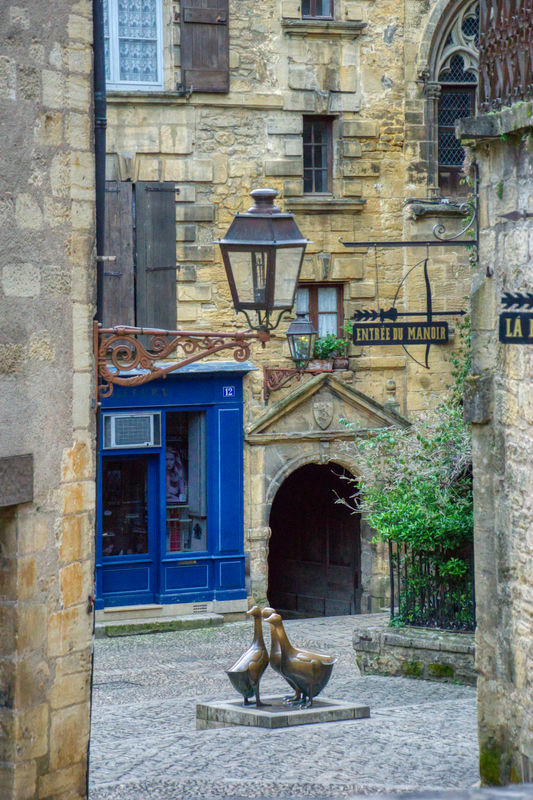
(Download)
St Maria Fountain, original spring, still in use today
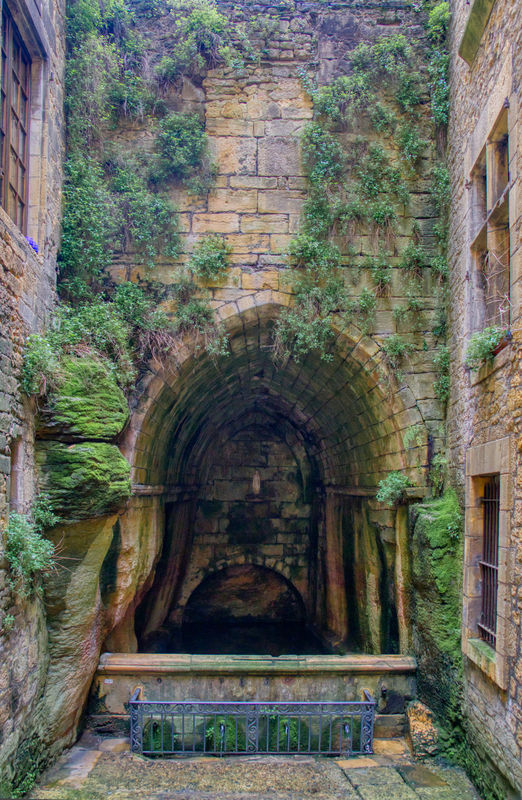
(Download)
Narrow Streets & Shops
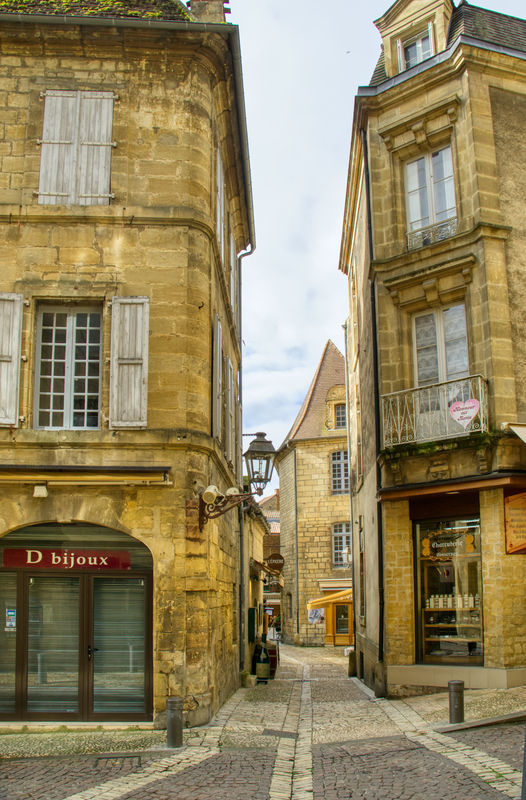
(Download)
Alley leads to Alley leads to Alley
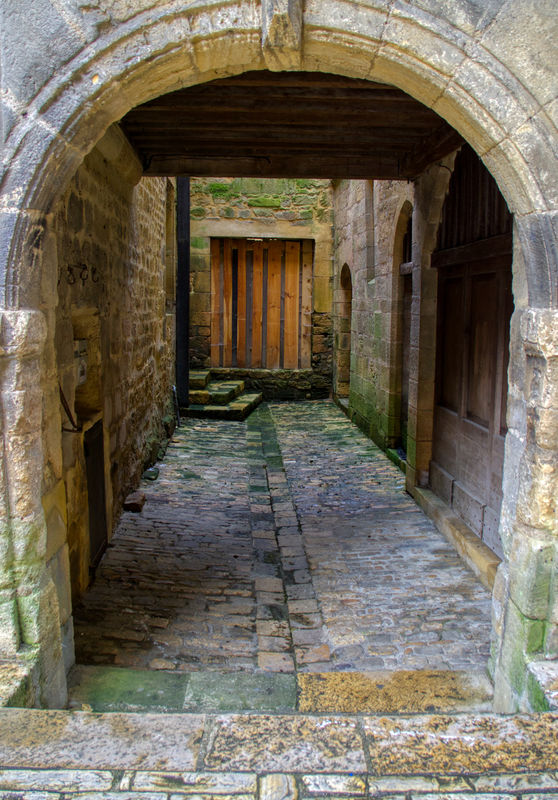
(Download)
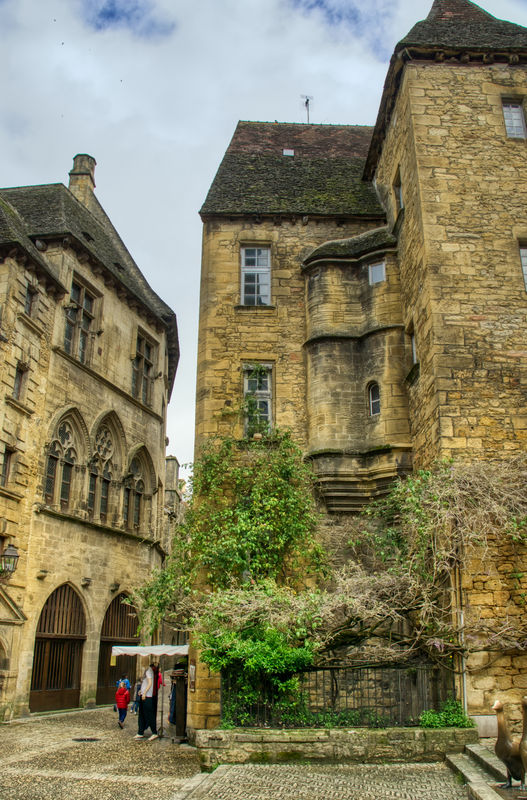
(Download)
Restaurants Abound
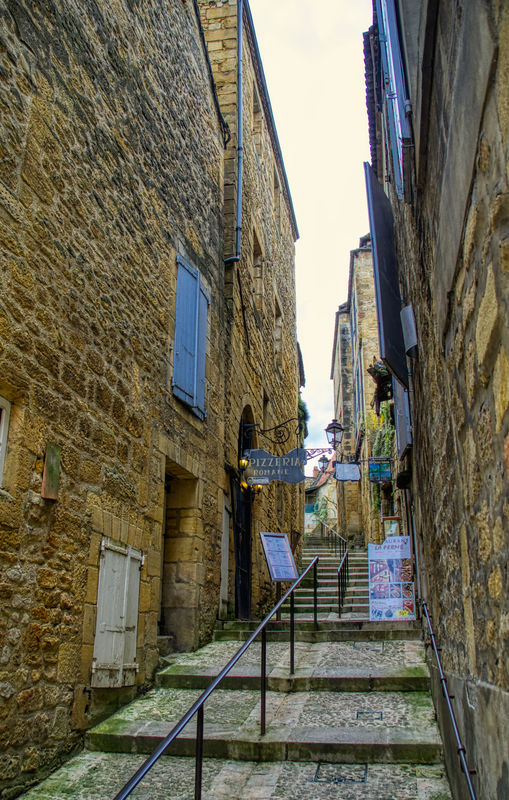
(Download)
Evening Walk
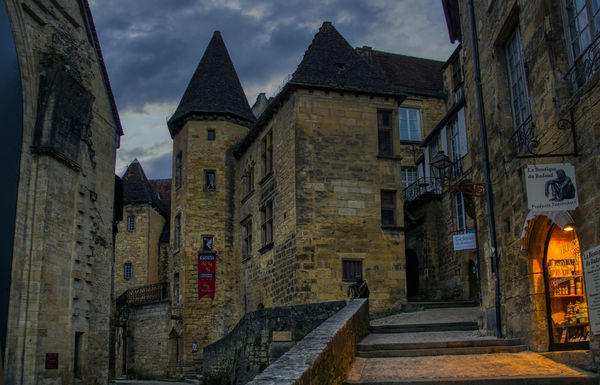
(Download)
Center Square, Cathedral in background
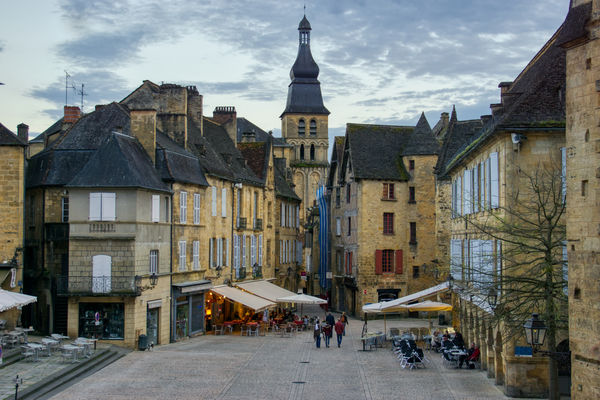
(Download)
Apr 17, 2020 20:23:03 #
Apr 17, 2020 20:44:22 #
Apr 17, 2020 20:54:02 #
Apr 17, 2020 21:06:57 #
What a fantastic tour you've provided for us. The photographs are all quite well done.
--Bob
--Bob
Blaster34 wrote:
On one of our past trips to Europe, the wife wante... (show quote)
Apr 17, 2020 21:18:33 #
Apr 17, 2020 21:26:25 #
Blaster34 wrote:
On one of our past trips to Europe, the wife wante... (show quote)
Your remarkable images were enhanced by the interesting information. In a way your captures remind me of Dubrovnic in Yugoslavia - narrow alleys that lead to other alleys, etc. I enjoyed this post very much, Blaster.






Apr 17, 2020 21:41:48 #
Wow! Great photos and narrative. When i see the stones in those buildings, I can't help wondering where they came from, what exact date they were placed, who placed them, and all the history which has passed, as well as the people and their lives and customs who walked these alleys, as they grew and changed from children to the elderly.
Apr 18, 2020 06:35:10 #
Apr 18, 2020 06:56:32 #
Thank you Architect, LS, Mike, Bob, UTMike, Annie & ELNikkor….Appreciate the comments and thanks for looking. To me personally its one the nicest part of France, beautiful countryside, great people, wonderful food and sights after sights but then again, there are so many beautiful areas or regions in France. Yes, the sandstone buildings are similar to Dubrovnik Annie, also a beautiful walled city, I visited it before the war and it was so beautiful. If you like old, Medieval European cities, this is one of the best.
Apr 18, 2020 07:55:41 #
Wow - neat set and what an intriguing town! You must have gotten up very early to capture the streets so empty! Of course - they probably look like that these days.
Apr 18, 2020 08:09:33 #
Apr 18, 2020 08:16:48 #
steve49
Loc: massachusetts
Nice set. It is a beautiful part of a beautiful country. Nice history.
I spent a week in Domme last fall... Domme is right across the Dourdogne River from Sarlat.
I spent a week in Domme last fall... Domme is right across the Dourdogne River from Sarlat.
Apr 18, 2020 08:20:45 #
sb wrote:
Wow - neat set and what an intriguing town! You must have gotten up very early to capture the streets so empty! Of course - they probably look like that these days.
Thanks Steve we did....early morning and evening are beautiful in this town especially with the sandstone buildings. Always an early riser anyway...Cheers
Apr 18, 2020 08:21:14 #
jaymatt wrote:
Nice set of photos recording your visit.
Thanks John, appreciate it.
If you want to reply, then register here. Registration is free and your account is created instantly, so you can post right away.










